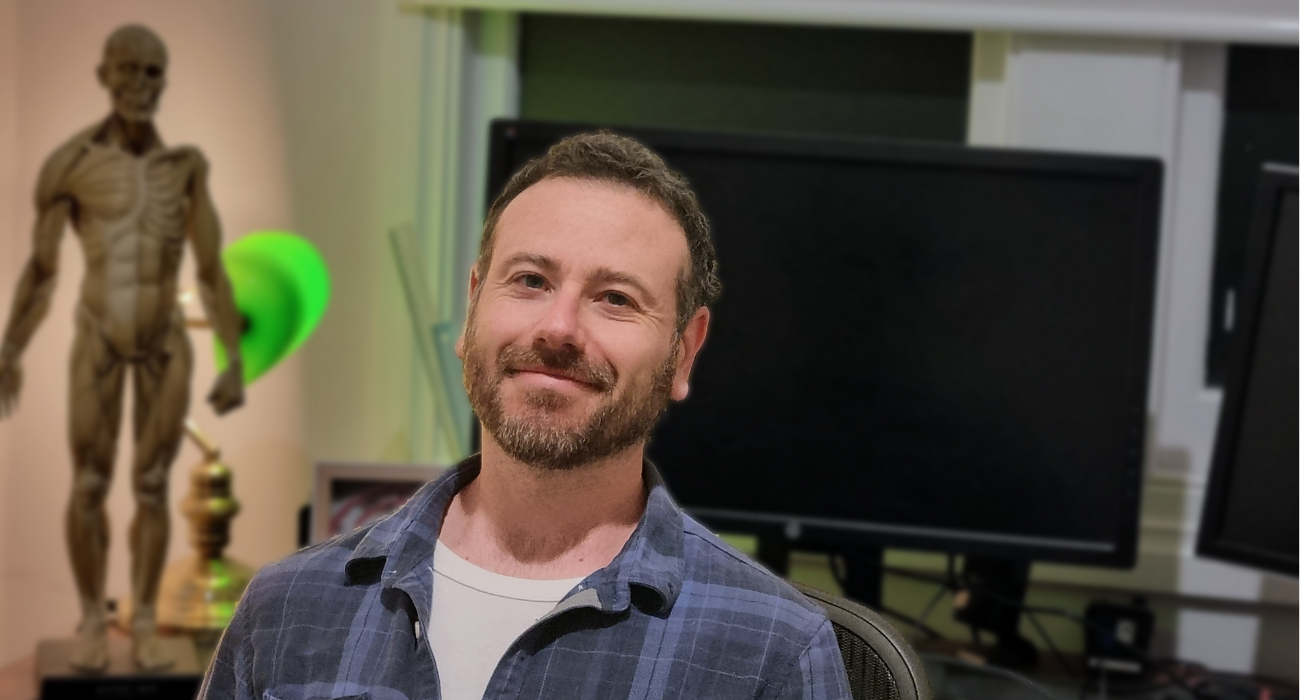Avi Goodman, Method Melbourne VFX Supervisor, talks about early days on the Amiga 500, the evolution of the industry, and the privilege of having a creative seat at the table
As a kid I had two main interests, drawing and computers. I began playing with animation from a very early age with a program called Deluxe Paint 3 on the family Amiga 500. Once I realised I could not only draw something on the computer but make it move I was hooked. There’s something special about bringing a character to life in that way.
After finishing school, I decided to have a go at making a living in animation. I literally went through the phone book looking for animation companies, and the second place I called was Glenn Melenhorst’s company Zephyr. He invited me for a chat. I physically brought my whole PC in with me, it was all very amateurish and primitive, but back in those days there was next to no local industry, it was very obscure. He saw enough potential in the work I showed him to take me on.
I worked there for a number of years doing commercials. I went overseas and came back a few times, finally returning in 2003 to what was then Iloura, and have been there ever since.
At that time a lot of us were generalists. Over the years, artists and departments became more segmented and specialised. I ended up specialising in rigging and animation, as well as being very involved in technical aspects of the pipeline.

You transitioned from CG Supervisor to VFX Supervisor – what is the biggest difference?
As CG Supervisor you are primarily tasked with the technical aspects of the work. I had always enjoyed the problem-solving aspect of that role, figuring out how to achieve something or working with the pipeline department to improve our tools and techniques. In a way, you occupy the boundary between the technical and creative.
For me the biggest change was being able to embrace the creative aspects of the work and have more creative input and interaction with the artists and client.
Can you tell us about one of your recent projects?
For New Line Cinema’s reboot of Mortal Kombat, we brought to life some of the franchise’s most well-known characters, including the iconic fan-favourite, Goro. Goro was a great character to work on. Director/Producer Simon McQuoid gave us a lot of freedom to explore design ideas. I was able to leverage my background in character work and interest in anatomy. It was a fun challenge to make this implausible creature feel authentic.
Our Animation Supervisor, Nick Tripodi and I had the opportunity to be on set supervising our sequences along with show VFX Supervisor, Chris Godfrey. We had a good time working with the stunt team to figure out Goro’s proportions, and designing arm, leg and head extensions for that to work. As Goro has four arms, they used two stunt performers at once for his performance.
Luckily, principal photography was completed just before COVID-19 hit, although reshoots were affected.

As well as Goro, we worked on a fight sequence between Nitara and Kung Lao. This was probably one of the goriest things we’d ever worked on. Without giving too much away, we had to model extensive internal anatomy for those shots, not to mention the blood. So much blood.
The other characters we worked on were Mileena who had a mouth full of viscous monster teeth as well as Jax, a soldier with robotic arms.
I’m currently working on a great project for Lionsgate and some other very exciting projects further into 2022 – stay tuned!
What are the best things about being a VFX Supervisor?
I love having the opportunity to collaborate with so many talented VFX artists as well as the film makers. Having a creative seat at the table is a huge privilege. I particularly enjoy the times when we’re given a bit of creative license to explore an idea or design. We were fortunate on Mortal Kombat to develop a very trusting relationship with the director and it was nice to see some of our ideas make it into the film.
What are the biggest challenges you’ve faced over the past 18 months?
Each job presents its own technical, creative and logistical challenges.
For me, working from home has surprisingly not been one of the greatest challenges. The team has adapted and supported each other remarkably well. We really haven’t seen a drop in efficiency, which has been great.
Most of the challenge for me comes from trying to be as efficient as possible to get the best possible results with the time and resources available. I feel very grateful that we have an outstanding production team, who do a great job of staying on top of everything and ensuring there’s nothing slipping through the cracks.
